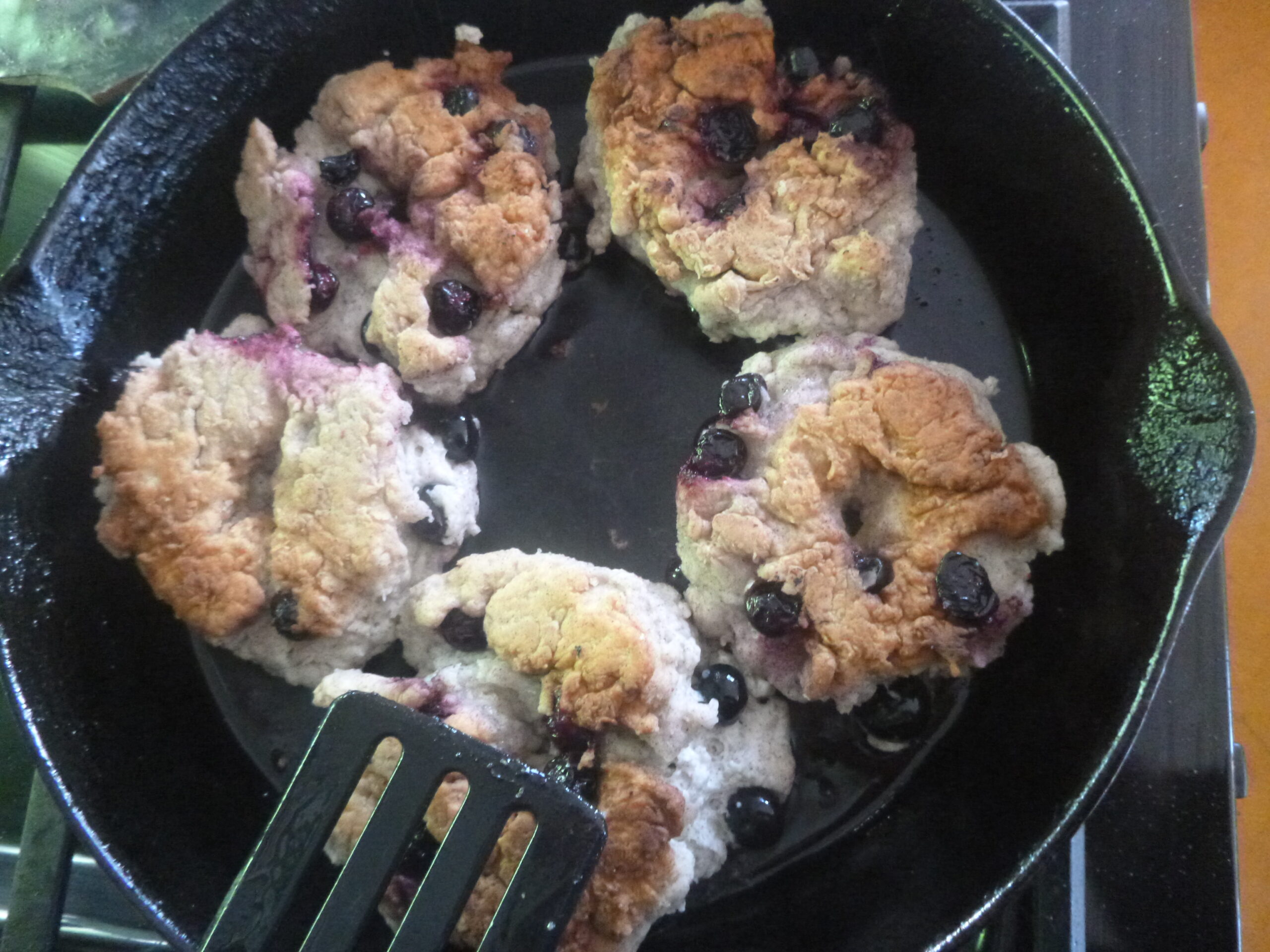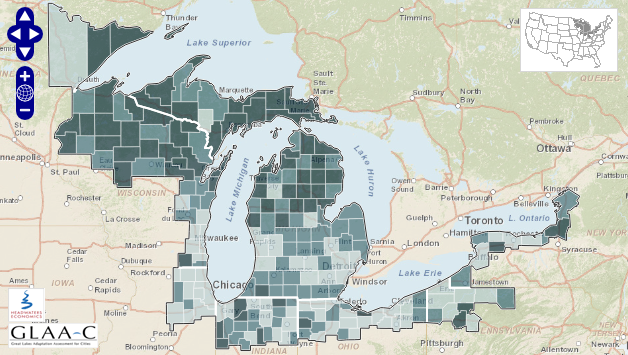
Editor’s Note: “Nibi Chronicles,” a monthly Great Lakes Now feature, is written by Staci Lola Drouillard. A direct descendant of the Grand Portage Band of Ojibwe, she lives and works in Grand Marais on Minnesota’s North Shore of Lake Superior. Her two books “Walking the Old Road: A People’s History of Chippewa City and the Grand Marais Anishinaabe” and “Seven Aunts” were published 2019 and 2022, and she is at work on a children’s story. “Nibi” is a word for water in Ojibwe, and these features explore the intersection of indigenous history and culture in the modern-day Great Lakes region.
Lumberjacks young and old have worked the thick woods inland from Gichigamiing since the very early days of European settlement. A business opportunity encouraged by the Timber and Stone Act of 1890, pulpwood was the top export for many years. In 1905 alone, 30,000 tons of pulpwood left Grand Marais Harbor for big cities on Lake Michigan and elsewhere. My dad’s cousin Jim Anderson was hired as a sawyer when he was teenager, a job he wrote about in his local newspaper column “Trestle Pine Days.” He tells the story of how he and his young workmate were exhausted, nearly “starved out” of the bush, when my Great Uncle Charlie Drouillard and fellow logger Victor Johnson invited the boys over to Charlie’s teepee for a stick-to-their-ribs remedy. As Jim recalled, “There he gave us freshly made doughnuts, hot, sweet all we could eat, cooked fine brown in a black kettle of smoking hot bear grease. Never before, or since have I eaten anything to compare to that tasty treat.”
If you are a recent visitor to Grand Marais, you’ll probably know what I mean when I say doughnuts have now replaced pulpwood as the town’s biggest export, at least within the realm of gastronomic consumption. Fried in lard, instead of bear grease, the local recipe brings in doughnut lovers from across the state, who form a mile-long doughnut line snaking along Broadway in downtown Grand Marais. And at pow-wows from Grand Portage to Pokagon Potawatomi, you will also find long lines of bread lovers waiting patiently outside the best frybread stands, after which they’ll sit down with paper plates heaped with golden-fried dough, often topped with spiced taco meat and other fixings.
Doughnuts and “Indian tacos” are not originally Indigenous foods, of course. Given that the glycemic index of sweet, fried dough is off the charts, frybread and her three sisters – bangs, lugalette and bannock – are now axed off restaurant menus that claim to “decolonize” our minds and bodies of unhealthy, settler foods.
What’s tricky about frybread, is that it’s not only a delicious treat, but is also a lingering symbol of Indigenous survivance, in spite of every attempt to starve the people out of existence. Ojibwe men like Great Uncle Charlie, with nothing more than basic ingredients and a bit of grease, could mix up a batch of doughnuts in the middle of the woods, bake them over a fire on the beach, or inside a wood-fired oven.
A localized approach
Turtle Mountain Chippewa writer and great cook Heid E. Erdrich touches on the history of frybread in her wonderful cookbook “Original Local: Indigenous Foods, Stories, and Recipes from the Upper Midwest.” She explains that “frybread was treaty ration food made of the flour and lard many indigenous people waited for—and starved for—when promised provisions did not arrive from governments that demanded we stop hunting and start eating the colonial diet.”
The Turtle Mountain Chippewa version of frybread are called “bangs,” and in her book Heid shares her take on the family recipe, complete with a mix of flours and spiced pumpkin puree. Turtle Mountain-style bangs are fried in sunflower oil, a nod to the great fields of prairie sunflowers that grow in that part of the world. It’s a fine example of how each family localizes its approach to making bread.
When our ancestors signed the Treaty of 1854, the promised rations included sacks of flour, twists of salt and sugar and small tins of baking powder. If you were lucky, your rations included cakes of lard, which may or may not arrive rancid, depending on conditions.
To make bread, you mixed your dry ingredients, made a well, added enough water to make a soft dough and fried it in the melted lard until crispy on the outside and light on the inside. But as Great Uncle Charlie might attest, in the north woods, bear grease was always the most reliable source of fat in a traditionally very lean diet. Rendered bear fat is not only a hearty cooking agent, but is also used for medicinal purposes, as a treatment for sunburn, bug bites and other skin ailments.
Lug by any other name
The writer and poet Linda LeGarde Grover lives in Duluth and is a member of the Bois Forte Band of Ojibwe. She is the eldest of 14 children and has written both fiction and non-fiction story collections, award-winning poetry books and three novels, including her newest, “A Song over Miskwaa Rapids.” In each of her seven books she includes at least one mention of lugalette, also known as “lug,” which is her family’s version of frybread. In her novels, some of her beloved characters fry lug like doughnuts, bake it on a cookie sheet, use it to feed crowds at gatherings and in some cases, try to attract a husband.
Linda is very forthcoming with her family recipe which requires a simple, and yet precise preparation, but no measuring implements as long as you know the difference between “a small handful” and a regular-sized one.
Lugalette consists of just five ingredients: flour, salt, sugar, baking powder and water (or milk if you can spare it). The LeGardes sometimes add fresh or dried blueberries, and Linda is always quick to mention that adding a bit of sugar—not too much—makes the dough delicious, just on its own.
Inspired by her description, I decide to look up my Grandma Lola’s bannock recipe, handed down from her days as a cook at various area kitchens. She scrawled it out in old-fashioned cursive, listing just five ingredients—flour, salt, sugar, baking powder and water—lugalette by another name.
I grab a medium size bowl, add the dry ingredients by the handful, just as Linda LeGarde Grover recommends. There are some fresh blueberries in the fridge so I throw in a handful of those. Rummaging around in the cupboard and realizing we are out of canola, I find a jar of coconut oil in the larder and put two heaping tablespoons in a cast iron pan. Mixing the dough lightly and letting it rest so the salt and baking powder can do their thing, I portion out six rough doughnuts with a hole in the middle and wait for the pan to get hot.
The Ojibwe word for bread is bakwezhigan. The Ojibwe lexicon divides our world into animate and inanimate. In that world view bread is alive and is spoken about as a living, animate thing. When my doughnuts hit the hot oil, the bannock rises up in the pan, just like it is supposed to, and the bit of sugar and added blueberries helps to caramelize the outside edges.
The batch is a bit heavier than I would have liked, but still delicious, because it feels and tastes like home. As Heid Erdrich says, “it’s a complex world,” when it comes to the legacy of frybread. But even though the world is complicated and full of choices and opinions, we are still able to coax life out of five ingredients plus some frying oil.
The old-timers did what they could to keep us all fed, and now it’s up to us to carry on the tradition, recognizing that good food is sometimes the simplest food. As edible evidence of the resiliency of Ojibwe people, frybread is both a symbol of starvation and survival, against all odds.
I think next time I decide to make a batch, I’ll add a bit of manoomin—wild rice—flour along with a touch of maple sugar, to see how that fries up in a little bit of grease, and give thanks for all that we have. Mino miigwechiwigiizhigad—happy thanksgiving.
Catch more news at Great Lakes Now:
Nibi Chronicles: Grand Portage Water Warriors
Nibi Chronicles: The art of Ojibwe linoleum
Featured image: Blueberry bannock. (Photo Credit: Staci Lola Drouillard)
1 Comment
-
When I was in grad school in Flagstaff AZ, I asked several of my Dine’ for frybread recipes, and tried them all…well, except the lard. Bluebird flower was the common denominator.
Another great read, Staci!




